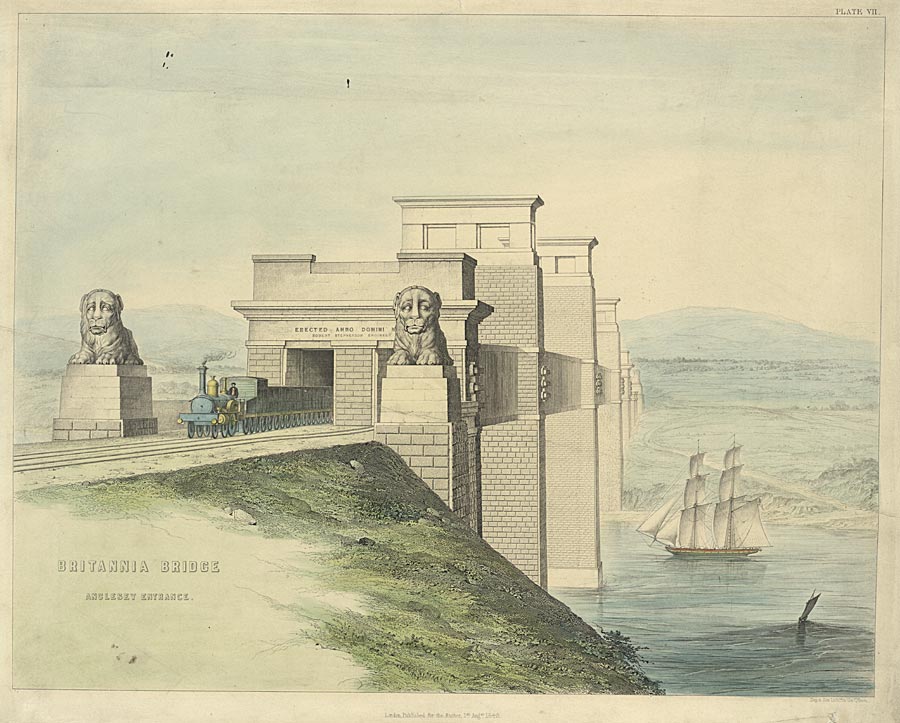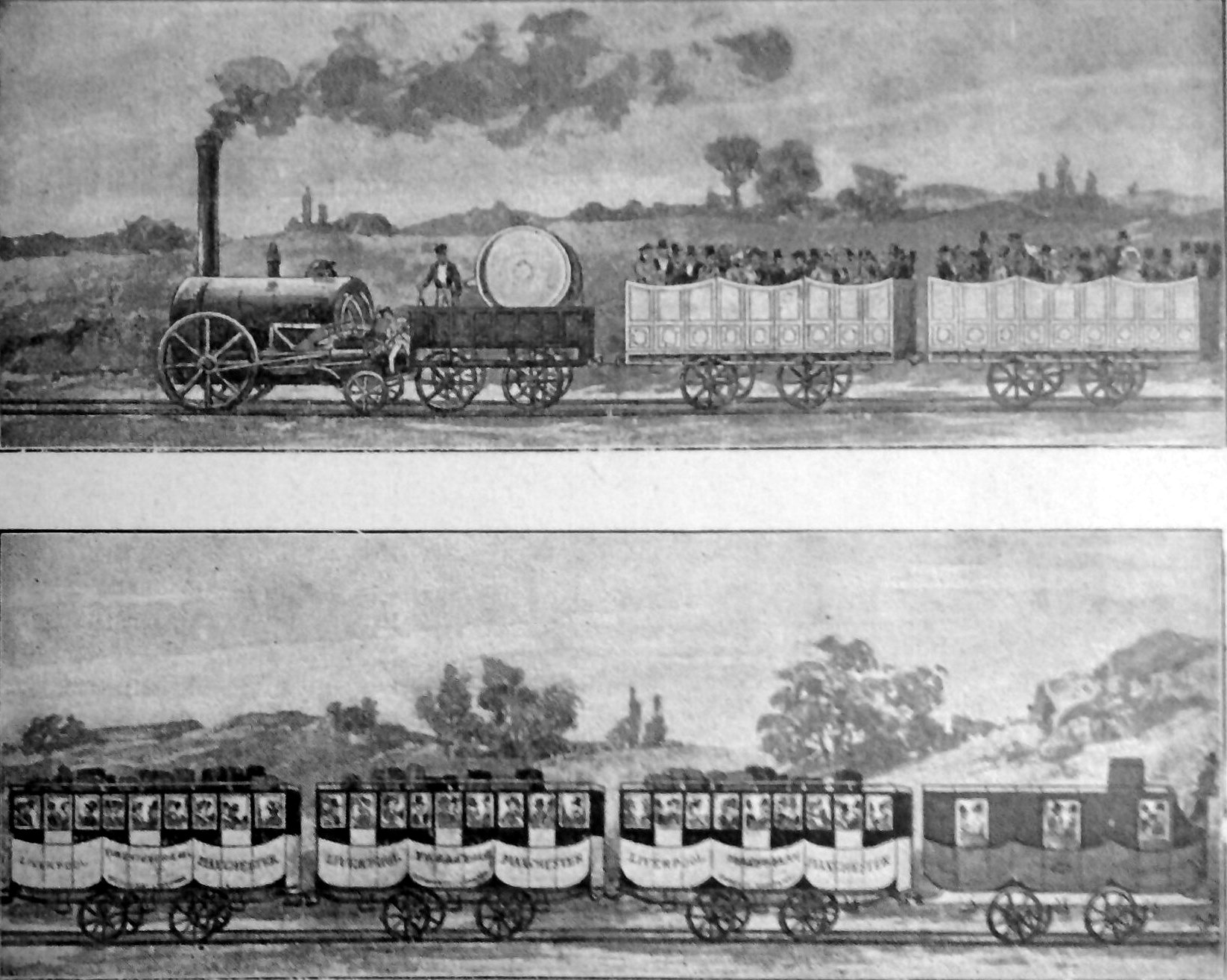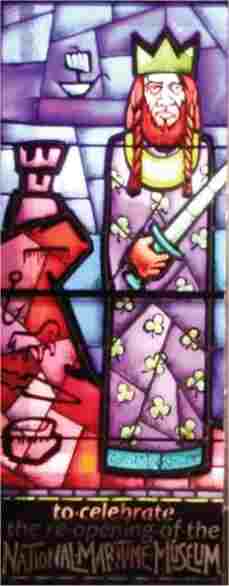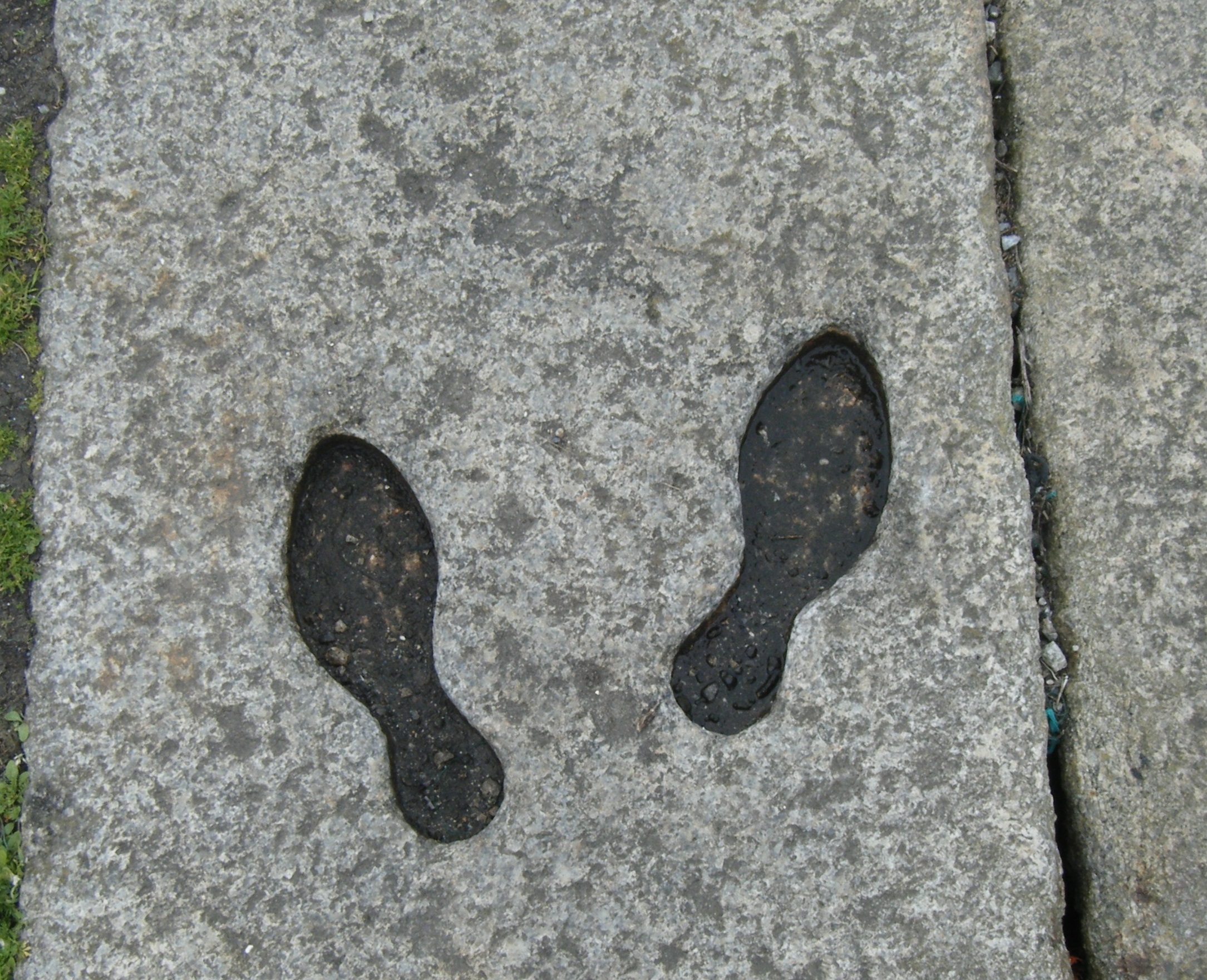|
Chester And Holyhead Railway
The Chester and Holyhead Railway was an early railway company conceived to improve transmission of government dispatches between London and Ireland, as well as ordinary railway objectives. Its construction was hugely expensive, chiefly due to the cost of building the Britannia Bridge, Britannia Tubular Bridge over the Menai Strait. The company had relied on Government support in facilitating the ferry service, and this proved to be uncertain. The company opened its main line throughout in 1850. It relied on the co-operation of other railways to reach London, and in 1859 it was absorbed by the London and North Western Railway. There were extensive mineral deposits at a number of locations south of the C&HR main line, and the C&HR and the LNWR encouraged the building of branch lines to serve them. Llandudno was an early centre of leisure and holiday travel, and in the last decades of the nineteenth century, that traffic became increasingly important. In the twentieth century, the ... [...More Info...] [...Related Items...] OR: [Wikipedia] [Google] [Baidu] |
Britannia Bridge
Britannia Bridge () is a bridge in Wales that crosses the Menai Strait between the Isle of Anglesey and city of Bangor, Gwynedd, Bangor. It was originally designed and built by the noted railway engineer Robert Stephenson as a tubular bridge of wrought iron rectangular box-section spans for carrying rail traffic. Its importance was to form a critical link of the Chester and Holyhead Railway's route, enabling trains to directly travel between London and the port of Holyhead, thus facilitating a sea link to Dublin, Ireland. Decades before the building of the Britannia Bridge, the Menai Suspension Bridge had been completed, but this structure carried a road rather than track; there was no rail connection to Anglesey before its construction. After many years of deliberation and proposals, on 30 June 1845, a Act of Parliament#Bills, Parliamentary Bill covering the construction of the Britannia Bridge received royal assent. At the British Admiralty, Admiralty's insistence, the bridge ... [...More Info...] [...Related Items...] OR: [Wikipedia] [Google] [Baidu] |
Holy Island, Anglesey
Holy Island (, 'the island of (Saint) Cybi') is an island on the western side of the larger Isle of Anglesey, Wales, from which it is separated by the Cymyran Strait. It is called "Holy" because of the high concentration of standing stones, burial chambers and other religious sites on the small island. The alternative English name of the island is Holyhead Island. According to the United Kingdom Census 2011, 2011 UK Census, the population was 13,659, of whom 11,431 (84%) lived in the largest town, Holyhead. Pre-history of Holy Island The settlement of Holy Island, Anglesey is dated to with the discovery of an original Neolithic long house. The long house is similar to those found in Scotland and elsewhere in the British Isles. Also near the Neolithic site on the middle of Holy island is the Bronze Age Ty Mawr standing stone (Menhir), which is a Monolith measuring 2.67m high (8 feet). Permanent settlement on Anglesey was established in different forms for thousands of years fr ... [...More Info...] [...Related Items...] OR: [Wikipedia] [Google] [Baidu] |
Chester And Crewe Railway
The Chester and Crewe Railway was an early British railway company, authorised in 1837 by the ( 7 Will. 4 & 1 Vict. c. lxiii). It was absorbed by the Grand Junction Railway in 1840 via the ( 3 & 4 Vict. c. xlix). The company built the section Chester–Crewe of the North Wales Coast line, in length, the engineer was Robert Stephenson and the contractor for the work was Thomas Brassey.Helps, Arthur ''The Life and Works of Mr Brassey'', 1872 republished Nonsuch, 2006, page 106. It was the absorption of this company that led the Grand Junction Railway to building its locomotive works at Crewe, which led to Crewe becoming a major railway town A railway town, or railroad town, is a settlement that originated, or was expanded, as a result of a railway line being constructed there. North America During the construction of the First transcontinental railroad in the 1860s, temporary, .... References Further reading * Grand Junction Railway Early British railway comp ... [...More Info...] [...Related Items...] OR: [Wikipedia] [Google] [Baidu] |
Chester And Birkenhead Railway
Chester is a cathedral city in Cheshire, England, on the River Dee, close to the England–Wales border. With a built-up area population of 92,760 in 2021, it is the most populous settlement in the borough of Cheshire West and Chester. It is also the historic county town of Cheshire and the second-largest settlement in Cheshire after Warrington. Chester was founded in 79 AD as a "castrum" or Roman fort with the name Deva Victrix during the reign of Emperor Vespasian. One of the main army camps in Roman Britain, Deva later became a major civilian settlement. In 689, King Æthelred of Mercia founded the Minster Church of West Mercia, which later became Chester's first cathedral, and the Angles extended and strengthened the walls to protect the city against the Danes. Chester was one of the last cities in England to fall to the Normans, and William the Conqueror ordered the construction of a castle to dominate the town and the nearby Welsh border. Chester was granted city sta ... [...More Info...] [...Related Items...] OR: [Wikipedia] [Google] [Baidu] |
Charles Blacker Vignoles
Charles Blacker Vignoles (31 May 1793 – 17 November 1875) was an Irish railway engineer, and eponym of the Vignoles rail. Early life He was born at Woodbrook, County Wexford, Ireland in May 1793 the son of Capt. Charles Henry Vignoles and Camilla, née Hutton. In 1794 Charles was promoted to a Captaincy in the 43rd Foot and posted to the West Indies with his wife and son. He was severely wounded in the unsuccessful storming of Point-à-Pitre, Guadeloupe and taken prisoner; whilst prisoners both he and Camilla contracted yellow fever. They were cared for by a M. Courtois, a merchant on the island. Henry died on 8 June 1794, Camilla a few days later. Charles, then thirteen months old survived, was cared for by M. Courtois who sent for Charles' uncle, Capt. George Henry Hutton (1765–1827) — later Lt. Gen — who reached Guadeloupe some ten months later. Charles was appointed an Ensign in the 43rd Foot with effect from 25 Oct 1794, at the age of 2½. It took some ... [...More Info...] [...Related Items...] OR: [Wikipedia] [Google] [Baidu] |
British Admiralty
The Admiralty was a Departments of the Government of the United Kingdom, department of the Government of the United Kingdom that was responsible for the command of the Royal Navy. Historically, its titular head was the Lord High Admiral of the United Kingdom, Lord High Admiral – one of the Great Officers of State. For much of its history, from the early Admiralty in the 18th century, 18th century until its abolition, the role of the Lord High Admiral was almost invariably put "in commission" and exercised by the Lords Commissioner of the Admiralty, who sat on the governing Board of Admiralty, rather than by a single person. The Admiralty was replaced by the Admiralty Board (United Kingdom), Admiralty Board in 1964, as part of the reforms that created the Ministry of Defence (United Kingdom), Ministry of Defence and its Navy Department (Ministry of Defence), Navy Department (later Navy Command (Ministry of Defence), Navy Command). Before the Acts of Union 1707, the Office of t ... [...More Info...] [...Related Items...] OR: [Wikipedia] [Google] [Baidu] |
Liverpool And Manchester Railway
The Liverpool and Manchester Railway (L&MR) was the first inter-city railway in the world. It Opening of the Liverpool and Manchester Railway, opened on 15 September 1830 between the Lancashire towns of Liverpool and Manchester in England. It was also the first railway to rely exclusively on locomotives driven by Steam engine, steam power, with no Horsecar, horse-drawn traffic permitted at any time; the first to be entirely double track throughout its length; the first to have a true Railway signalling, signalling system; the first to be fully Public transport timetable, timetabled; and the first to carry mail. Trains were hauled by company steam locomotives between the two towns, though private wagons and carriages were allowed. Cable railway, Cable haulage of freight trains was down the steeply-graded Wapping Tunnel to Liverpool Docks from Edge Hill junction. The railway was primarily built to provide faster transport of raw materials, finished goods, and passengers between ... [...More Info...] [...Related Items...] OR: [Wikipedia] [Google] [Baidu] |
Grand Junction Railway
The Grand Junction Railway (GJR) was an early railway company in the United Kingdom, which existed between 1833 and 1846. The line built by the company, which opened in 1837, linked the Liverpool and Manchester Railway to Birmingham via Warrington, Crewe, Stafford and Wolverhampton. This was the first trunk railway to be completed in England, and arguably the world's first long-distance railway with steam traction. It terminated at Birmingham Curzon Street railway station (1838–1966), Curzon Street Station in Birmingham, which it shared with the London and Birmingham Railway (L&BR), whose adjacent platforms gave an interchange with full connectivity (with through carriages) between Liverpool, Manchester and London. The company merged with its business partners in 1846 to form the London and North Western Railway (LNWR). The lines which comprised the GJR now form the central section of the West Coast Main Line. History The Grand Junction Railway Company was established in ... [...More Info...] [...Related Items...] OR: [Wikipedia] [Google] [Baidu] |
London And Birmingham Railway
The London and Birmingham Railway (L&BR) was a railway company in the United Kingdom, in operation from 1833 to 1846, when it became part of the London and North Western Railway (L&NWR). The railway line which the company opened in 1838, between London and Birmingham, was the first intercity line to be built into London. It is now the southern section of the West Coast Main Line. The line was engineered by Robert Stephenson. It started at Euston Station in London, went north-west to Rugby, where it turned west to Coventry and on to Birmingham. It terminated at Curzon Street Station, which it shared with the Grand Junction Railway (GJR), whose adjacent platforms gave an interchange with full connectivity (with through carriages) between Liverpool, Manchester and London. History Early plans As early as 1823, a company was formed with the objective of building a railway between London and Birmingham, and in 1826, the engineer John Rennie surveyed a route through Oxford and B ... [...More Info...] [...Related Items...] OR: [Wikipedia] [Google] [Baidu] |
George IV Of The United Kingdom
George IV (George Augustus Frederick; 12 August 1762 – 26 June 1830) was King of the United Kingdom of Great Britain and Ireland and King of Hanover from 29 January 1820 until his death in 1830. At the time of his accession to the throne, he was acting as prince regent for his father, King George III, having done so since 5 February 1811 during his father's final mental illness. George IV was the eldest child of King George III and Queen Charlotte. He led an extravagant lifestyle that contributed to the fashions of the Regency era. He was a patron of new forms of leisure, style and taste. He commissioned John Nash to build the Royal Pavilion in Brighton and remodel Buckingham Palace, and commissioned Jeffry Wyatville to rebuild Windsor Castle. George's charm and culture earned him the title "the first gentleman of England", but his dissolute way of life and poor relationships with his parents and his wife, Caroline of Brunswick, earned him the contempt of the pe ... [...More Info...] [...Related Items...] OR: [Wikipedia] [Google] [Baidu] |
Dún Laoghaire
Dún Laoghaire ( , ) is a suburban coastal town in County Dublin in Ireland. It is the administrative centre of the county of Dún Laoghaire–Rathdown. The town was built up alongside a small existing settlement following 1816 legislation that allowed the building of a major port to serve Dublin. It was known as Dunleary in the English language, until it was renamed Kingstown in honour of King George IV's 1821 visit, and in 1920 was given its present name Dún Laoghaire, the original Irish form from which "Dunleary" was anglicised. Over time, the town became a residential location, a seaside resort, the terminus of Ireland's first railway and the administrative centre of the former borough of Dún Laoghaire, and from 1994, of the county of Dún Laoghaire–Rathdown. Toponymy The town's name means "fort of Laoghaire". This refers to Lóegaire mac Néill (modern spelling: Laoghaire Mac Néill), a 5th-century High King of Ireland, who chose the site as a sea base from which to ... [...More Info...] [...Related Items...] OR: [Wikipedia] [Google] [Baidu] |
Howth
Howth ( ; ; ) is a peninsular village and outer suburb of Dublin, Republic of Ireland, Ireland. The district as a whole occupies the greater part of the peninsula of Howth Head, which forms the northern boundary of Dublin Bay, and includes the island of Ireland's Eye, which holds multiple natural protection designations. Howth has been settled since prehistoric times, and features in Irish mythology. A fishing village and small trading port from at least the 14th century, Howth has grown to become a busy and affluent suburb of Dublin, with a mix of suburban residential development, wild hillside and heathland, golf courses, cliff and coastal paths, a small quarry and a busy commercial fishing port. The only neighbouring district on land is Sutton, Dublin, Sutton. Howth is also home to one of the oldest occupied buildings in Ireland, Howth Castle, and its estate. Howth is also a Civil parishes in Ireland, civil parish in the ancient Barony (Ireland), barony of Coolock (barony), ... [...More Info...] [...Related Items...] OR: [Wikipedia] [Google] [Baidu] |









